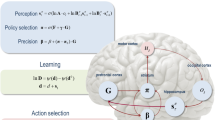Abstract
Modern transformational grammarians, using only their own intuitions as the basic data for rule construction, may not be analyzing the common, natural language of the speech community. Do native speakers share the intuitions of linguists? One hundred and fifty exemplar sentences from 6 linguists' articles were presented to 43 linguistically naive and 22 linguistically nonnaive native speakers. Native speakers agreed among themselves as to the acceptability or unacceptability of 80% of the sentences. Subjects shared intuitions with linguists in only a half of the exemplars. It is suggested that linguists consult nonlinguists as to the acceptability of exemplars, which illustrate the rules proposed, as a check that those rules reflect the formal structure of the common language being described.
Similar content being viewed by others
References
Amster, H. (1964). Semantic satiation and generation: Learning? adaptation?Psychol. Bull. 62: 273–286.
Bever, T. G. (1968). Associatons to S-R theories of language. In Dixon, T., and Horton, D. (eds.),Verbal Behavior and General Behavior Theory. Prentice-Hall, Englewood Cliffs, N.J., pp. 478–494.
Bever, T. G. (1970). The cognitive basis for linguistic structures. In Hayes, J. R. (ed.),Cognition and the Development of Language. Wiley, New York, pp. 270–352.
Boring, E. G. (1950).A History of Experimental Psychology, 2nd ed., Appleton-Century-Crofts, New York.
Chomsky, N. (1957).Syntactic Structures. Mouton, The Hague.
Chomsky, N. (1961). Some methodological remarks on generative grammar.Word 17: 219–239.
Chomsky, N. (1964b). Current issues in linguistic theory. In Fodor, J., and Katz, J. (eds.),The Structure of Language: Readings in the Philosophy of Language. Prentice-Hall, Englewood Cliffs, N.J., pp. 50–118.
Chomsky, N. (1964b). A transformational approach to syntax. In Fodor, J., and Katz, J. (eds.),The Structure of Language: Radings in the Philosophy of Language. Prentice-Hall, Englewood Cliffs, N.J., pp. 211–245.
Chomsky, N. (1964c). Degrees of grammaticalnes. In Fodor, J., and Katz, J. (eds.),The Structure of Language: Readings in the Philosophy of Language. Prentice-Hall, Englewood Cliffs, N.J., pp. 384–389.
Chomsky, N. (1965).Aspects of the Theory of Syntax. M.I.T. Press, Cambridge, Mass.
Chomsky, N., and Miller, G. (1963). Introduction to the formal analysis of natural languages. In Luce, R. D., Bush, R. R., and Galanter, E. (eds.),Handbook of Mathematical Psychology, Vol. 2, Wiley, New York, pp. 269–322.
Cofer, C. N. (1968). Problems, issues and implications. In Dixon, T., and Horton, D. (eds.),Verbal Behavior and General Behavior Theory. Prentice-Hall, Englewood Cliffs, N.J., pp. 522–537.
Fowler, R. (1970). Against idealization: Some speculations on the theory of linguistic performance.Linguistics 63: 19–50.
Garrett, M., and Fodor, J. (1968). Psychological theories and linguistic constructs. In Dixon, T., and Horton, D. (eds.),Verbal Behavior and General Behavior Theory. Prentice-Hall, Englewood Cliffs, N.J., pp. 451–477.
Hill, A. A. (1961). Grammaticality.Word 17: 1–10.
Jakobovits, L. A., and Lambert, W. E. (1964). Stimulus characteristics as determinants of semantic changes with repeated presentation.Am. J. Psych. 77: 84–92.
Kanungo, R. N., and Lambert, W. E. (1963). Paired associate learning as a function of stimulus and response satiation.Brit. J. Psych. 54: 135–144.
Labov, W. (1972). Some principles of linguistic methodology.Language in Society 1: 97–120.
Lakoff, R. (1968).Abstract Syntax and Latin Complementation. M.I.T. Press, Cambridge, Mass., pp. 144–150.
Langacker, R. W. (1967).Language and Its Structure: Some Fundamental Linguistic Concepts. Harcourt, Brace & World, New York.
Lyons, J. (1968).Introduction to Theoretical Linguistics. Harvard University Press, Cambridge, Mass., Ch. 4.
Miller, G. (1967). Some psychological studies of grammar. In Jakobovits, L., and Miron, M. (eds.),Readings in the Psychology of Language. Prentice-Hall, Englewood Cliffs, N.J., pp. 201–218.
Oller, J. W., Sales, B. D., and Harrington, R. V. (1970). Toward consistent definitions of some psycholinguistic terms.Linguistics 57: 48–59.
Perlmutter, D. M. (1968). Deep and surface structure constraints in syntax. Unpublished doctoral dissertation, Massachusetts Institute of Technology, Cambridge, Mass.
Postal, P. (1969). On so-called “pronouns” in English. In Reibel, D., and Schane, S. (eds.),Modern Studies in English. Prentice-Hall, Englewood Cliffs, N.J., pp. 204–222.
Rosenbaum, P. (1969). Phrase structure principles of English complex sentence formation. In Reibel, D., and Schane, S. (eds.),Modern Studies in English. Prentice-Hall, Englewood Cliffs, N.J., pp. 317–328.
Ross, J. (1969a). A proposed rule of tree-pruning. In Reibel, D., and Schane, S. (eds.),Modern Studies in English. Prentice-Hall, Englewood Cliffs, N.J., pp. 289–297.
Ross, J. (1969b). On the cyclic nature of English pronominalization. In Reibel, D., and Schane, S. (eds.),Modern Studies in English. Prentice-Hall, Englewood Cliffs, N.J., pp. 187–199.
Siegel, S. (1956).Nonparametric Statistics. McGraw-Hill, New York.
Smith, C. (1969). Determiners and relative clauses in a generative grammar of English. In Riebel, D., and Schane, S. (eds.),Modern Studies in English. Prentice-Hall, Englewood Cliffs, N. J., pp. 248–261.
Stolz, W. S. (1969). Some experiments with queer sentences.Language and Speech 12: 203–219.
Taylor, M. M., and Henning, G. B. (1963). Verbal transformations and an effect of instructional bias on perception.Canad. J. Psych. 17: 210–223.
Warren, R. M. (1968). Verbal transformation effect and auditory perceptual mechanisms.Psychol. Bull. 70: 261–270.
Author information
Authors and Affiliations
Additional information
Support was provided to the author by Public Health Service Training Grant HD00151 from the National Institute of Child Health and Human Development.
Rights and permissions
About this article
Cite this article
Spencer, N.J. Differences between linguists and nonlinguists in intuitions of grammaticality-acceptability. J Psycholinguist Res 2, 83–98 (1973). https://doi.org/10.1007/BF01067203
Received:
Issue Date:
DOI: https://doi.org/10.1007/BF01067203



